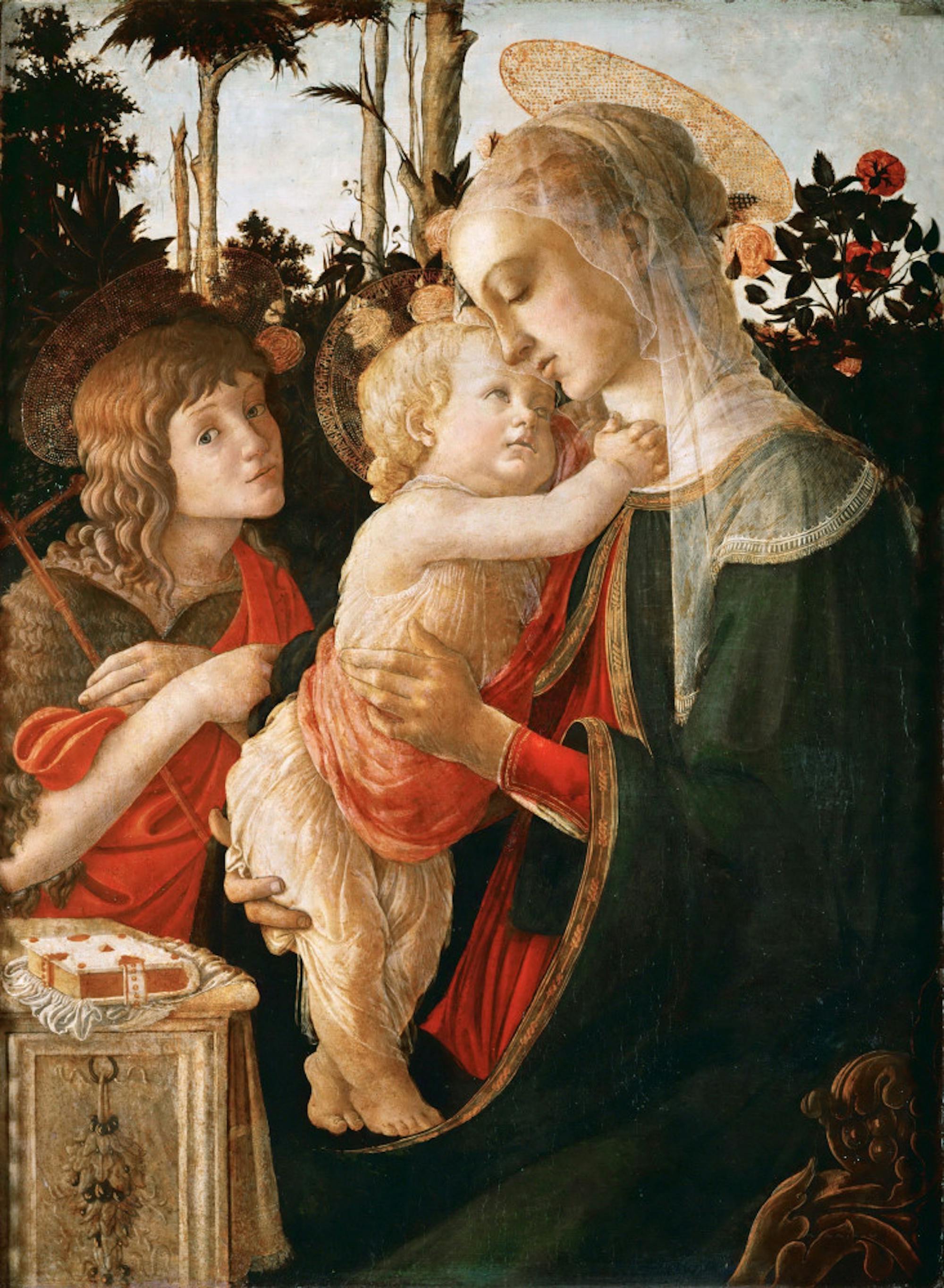In a correspondence regarding a Sandro Botticelli about to come on the market in 1894, Isabella Stewart Gardner's main collection advisor Bernard Berenson famously posed to her:
“How badly do you want a Botticelli?”
In response, Gardner secured “The Death of Lucretia” (1496-1504) before the Museum of Fine Arts (MFA) could even get a bid on it. This story, along with many others surrounding Botticelli’s work and its influences can be found at the MFA’s current exhibition, “Botticelli and the Search for the Divine.” The show features the largest amount of Botticelli’s work ever on display in the United States. It features works such as Botticelli’s “Venus” (1484-90) -- not to be confused with “The Birth of Venus” (1484-86) -- “Minerva and Centaur” (1482) and “Virgin and Child with the Young Saint John” (about 1495), along with many other masterworks. Many of the works presented are on loan from other museums, such as the Isabella Stewart Gardner Museum.
Works from Botticelli’s teacher Filippo Lippi, his student Filippino Lippi and other contemporaries are also on display to provide context for the large body of Botticelli’s works. What makes the show particularly breathtaking is the sheer amount of work placed alongside each other for one of the first times in recent history, as well as the collaborative effort that went into it: the show was organized by the Muscarelle Museum of Art at the College of William & Mary and Italy’s Metamorfosi Associazione Culturale. It’s rare for multiple museums to come together and arrange such a prolific show, featuring works spanning every era of an artist’s career.
The gallery provides an intimate setting for the works, mimicking the altars that some of the works used to function as. An example of this is Botticelli’s “Christ on the Cross” (1480), a wooden sculpture placed on a pedestal in light, creating a dramatic shadow behind it. The full effect of the lighting, textures and three-dimensionality of the work can only be properly experienced in person, and is one of the many reasons why this show is a knockout.
Another stunning work located in the middle room of the show is “Minerva and the Centaur.” Botticelli is famous for his depictions of classical mythology, and this work is no exception. What is illustrated so vividly in this work is Botticelli’s attention to detail. Every one of the goddess Minerva’s baby hairs is depicted flying in the wind, while she looks at the centaur with a gaze only Botticelli could paint: slightly distant, as if she is zoning out, but tinged with boredom. The three-ring design on Minerva’s dress is the insignia of the Medici family, one of Botticelli’s patrons.
It is clear from Botticelli’s command of paint and naturalistic depictions of humans and nature that the painting represents not only the historical triumph of the Medicis, but also the triumph of Botticelli’s fictitious rendering of the myth of Minerva capturing nature as pointedly as possible. One could even argue that Botticelli’s depiction of the natural world is more beautiful than the natural world itself, an ultimate triumph of man’s artistic abilities over the natural order.
One of the most stunning works in the show is the MFA’s own “Virgin and Child with Saint John the Baptist” (circa 1500), which is in the final gallery of the exhibition and is another example of Botticelli’s virtuosity in picturing the human form. The Virgin’s skin looks so soft that it creates an almost haptic effect, and her veil is so delicately painted that viewers cannot even see it from a distance. The painting requires close attention from the viewer, as the artist himself has put all of his attention into the details.
As the exhibition adequately demonstrates, the unwavering beauty of Botticelli’s works are impossible to ignore.
MFA captivates crowds with 'Botticelli and the Search for the Divine'

'Madonna and Child with the Young Saint John the Baptist' (circa 1500)
Summary
Words do not do "Botticelli and the Search for the Divine" justice. Go see it in person.
4.5 Stars





